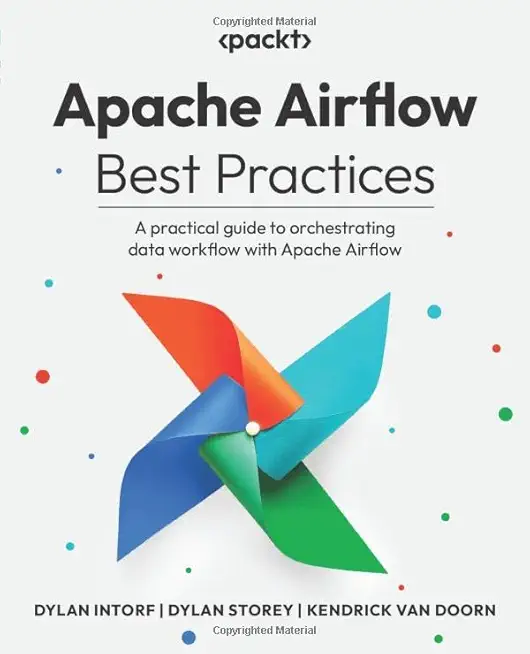
Intorf, Dylan
Key Features:
- Understand the steps for migrating from Airflow 1.x to 2.x and explore the new features and improvements in version 2.x
- Learn Apache Airflow workflow authoring through real-world use cases
- Uncover strategies to operationalize your Airflow instance and pipelines for resilient operations and high throughput
- Purchase of the print or Kindle book includes a free PDF eBook
Book Description:
Data professionals face the monumental task of managing complex data pipelines, orchestrating workflows across diverse systems, and ensuring scalable, reliable data processing. This definitive guide to mastering Apache Airflow, written by experts in engineering, data strategy, and problem-solving across tech, financial, and life sciences industries, is your key to overcoming these challenges. It covers everything from the basics of Airflow and its core components to advanced topics such as custom plugin development, multi-tenancy, and cloud deployment.
Starting with an introduction to data orchestration and the significant updates in Apache Airflow 2.0, this book takes you through the essentials of DAG authoring, managing Airflow components, and connecting to external data sources. Through real-world use cases, you'll gain practical insights into implementing ETL pipelines and machine learning workflows in your environment. You'll also learn how to deploy Airflow in cloud environments, tackle operational considerations for scaling, and apply best practices for CI/CD and monitoring.
By the end of this book, you'll be proficient in operating and using Apache Airflow, authoring high-quality workflows in Python for your specific use cases, and making informed decisions crucial for production-ready implementation.
What You Will Learn:
- Explore the new features and improvements in Apache Airflow 2.0
- Design and build data pipelines using DAGs
- Implement ETL pipelines, ML workflows, and other advanced use cases
- Develop and deploy custom plugins and UI extensions
- Deploy and manage Apache Airflow in cloud environments such as AWS, GCP, and Azure
- Describe a path for the scaling of your environment over time
- Apply best practices for monitoring and maintaining Airflow
Who this book is for:
This book is for data engineers, developers, IT professionals, and data scientists who want to optimize workflow orchestration with Apache Airflow. It's perfect for those who recognize Airflow's potential and want to avoid common implementation pitfalls. Whether you're new to data, an experienced professional, or a manager seeking insights, this guide will support you. A functional understanding of Python, some business experience, and basic DevOps skills are helpful. While prior experience with Airflow is not required, it is beneficial.
Table of Contents
- Getting Started with Airflow 2.0
- Core Airflow Concepts
- Components of Airflow
- Basics of Airflow and DAG Authoring
- Connecting to External Sources
- Extending Functionality with UI Plugins
- Writing and Distributing Custom Providers
- Orchestrating a Machine Learning Workflow
- Using Airflow as a Driving Service
- Airflow Ops: Development and Deployment
- Airflow Ops Best Practices: Observation and Monitoring
- Multi-Tenancy in Airflow
- Migrating Airflow







